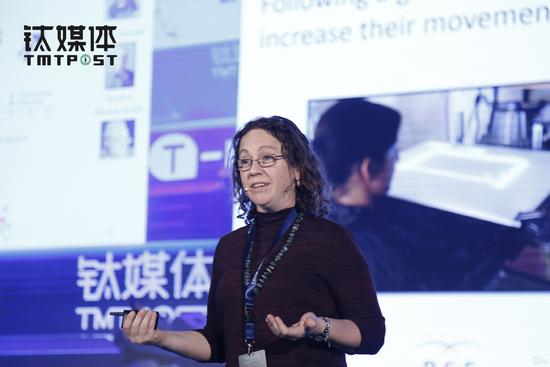In recent years, medical robots have become one of the research hotspots in the field of robotics. The surgical robot is a smart surgical tool. With precise interventions, ontology structures and intelligent control systems, it can break through the limitations of the original doctor's hand and eye, improve clinical operation accuracy and surgical success rate. At present, surgical robots have been widely used in neurosurgery, abdominal surgery, thoracic surgery, orthopedics, ophthalmology, ENT, vascular intervention and craniofacial surgery. After surgery, different types of rehabilitation robots are being developed or are already in use. Currently known medical robots include the Da Vinci surgical system, the ZEUS robotic surgery system, and the AESOP robotic system. This 2016 Titanium Media T-EDGE Annual Ceremony invited experts from medical surgery robots, neuroscientist Dr. Ilana Nisky to share with us the latest scientific research results of medical surgical robots. Dr. Nisky is the head and founder of the Biomedical Intelligent Robotics Laboratory at Ben Gurion University in Israel. Her research interests include ergonomics, neuroscience in machines, and medical surgical robots. She is also a member of the Board of Directors of the Israel Medical and Bioengineering Association and a member of the European Society of Tactile Studies. To date, she has published more than 40 articles in world-class scientific journals and has won numerous international awards. In 2015, it was named one of the “40 Most Promising Young People of 2015†by Israel's famous financial media, The Marker. Neuroscientist Dr. Ilana Nisky The robot center of Ben Gurion University is divided into three parts. The Homeland Security Robot Division focuses on defense research, the Production and Industrial Robot Division is responsible for research on production, service, and management, while the ABC Robotics Division focuses on agriculture, biology, and cognition. field. The biomedical intelligent robot laboratory led by Dr. Nisky two years ago also belongs to the ABC Robotics Department. "The special project of ABC is that in addition to conducting robot research in the traditional field, it is now involved in the research field of the most advanced robots, including human-machine cooperation and environmental protection design. Our laboratory belongs to the environmental engineering department. I work with the health department, psychologists, scientists, and life scientists. The entire research team promotes research to a higher level in an interdisciplinary way." Dr. Nisky has a curly hair and talks about his own research. She has three of the greatest research interests, one is medicine, the other is robotics, and the third is also the most important, neuroscience. Basically, how to use neuroscience to improve the human-computer interaction experience, improve the efficiency of robotic surgery, and alleviate patients' pain is her current research focus. For a long time, the surgery is purely man-made. Although it is helpful for the surgeon to understand the condition and structure of the patient, it is not a comfortable thing for the patient. Pain and postoperative infection and complications may be fatal. A few decades ago, the emergence of embedded surgical equipment, such as endoscopes, slowed some of the pain caused by surgery, but it was not enough. Now, the surgeon starts the robot to cooperate. Robots can greatly reduce the impact of human factors on surgical accuracy (such as hand shake) and control and move these devices installed in patients. But at present, surgical robots have many shortcomings. They are cumbersome, passively subject to human control, lack of feedback mechanisms, and the only information that can be fed back to the surgeon is visual information. Medical robots currently have several active research directions. One is visual constrained. For example, by making visual restrictions on the robot, let the machine understand that a certain area of ​​the patient's body is absolutely immovable. The second is shared-control robotic systems, which refers to one operation, some of which are artificially dominated and some of which are machine-driven. During the operation, the person interacts with the robot to complete the operation. This is one of Professor Nisky's research areas. Through the action-controlled measurement model in neuroscience, he describes human behavior patterns and uses these models to improve and improve robot design. The third is the experience of human-computer interaction, which is also the research focus of Professor Nisky. HPV Nucleic Acid Detection Solution hpv HANGZHOU DIAN BIOTECHNOLOGY CO., LTD. , https://www.dianbiotech.com
[Viewpoint] Can medical robots help doctors complete the most difficult surgery in history?
